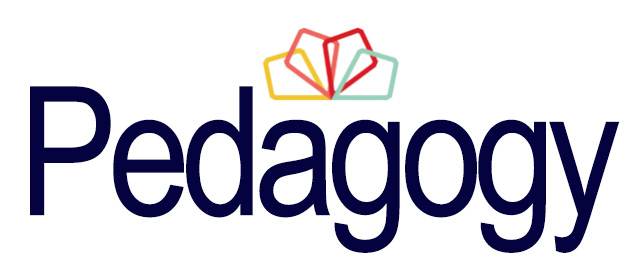
Introduction
Industry research shows a persistent gender imbalance in creative sectors, with an underrepresentation of women in technical roles and overrepresented in managerial positions (Creative Skillset, 2014). Data from the Film Production BA at University of Salford reveals that while many female students initially choose technical pathways in their second year they often shift to creative or logistical roles by their final year, reflecting the industry pattern.
The project objective was to explore the motivations behind such shifts and seeks strategies to promote female engagement in technical roles. Aiming to help female students see themselves as capable technical practitioners and to rethink how educational contexts can help to support gender equity in creative technology.
‘In one world –– the world of fixed traits - success is about proving you're smart or talented. Validating yourself. In the other – the world of changing qualities – it's about stretching yourself to learn something new’. (Dweck, 2017).

Table 1: Table illustrating choices of module choices at Level 5 and Level 6 across 3 years
Methods
This project examines female engagement with technical environments through collaborative sessions at the Nested Cinema Research Lab alongside the development of their own immersive projects. Participants created immersive works using new cinema technologies such as multi-screen projection, reactive lighting, surround sound, and VR.
The process was reflective and guided by the concept of “noticing” (Hod et al., 2023). Informed by Dweck’s (2008) fixed vs. growth mindset theory and utilising Nottingham & Larsson’s (2019) emphasis on agency and collaboration, the project aimed to foster resilience and learning through co-creation. With evaluation of the process drawing on group reflections, questionnaires, and interviews.
Reflection and Results
Initially fewer than 20% of participants reported feeling confident engaging with new cinema technologies, such as spatialised sound, VR, and the Isadora software system. During tutor led sessions, participants gravitated toward familiar screen-based tools and avoided immersive technologies altogether. Through discussions held in early sessions, it became clear that fixed mindsets and self-limiting beliefs were shaping technical disengagement. Participants voiced concerns about gendered control of equipment and limited access to technical leadership roles.
A peer-teaching intervention was introduced, assigning students to small groups (Lighting, Screen Control, Spatialised Sound). Each group learned a system, created visual guides, and then taught peers in cross-group demonstrations. While some initial anxiety was observed, this structure eventually fostered collaboration, broke down hierarchies, and supported peer validation.
As the project progressed participants became increasingly willing to experiment with unfamiliar technologies, particularly once creative purpose was prioritised over technical instruction. When asked to conceptualise immersive experiences, students began actively exploring the full range of tools—including previously avoided areas like VR and spatialised audio.
By the end of the project, more than 50% of participants were confidently working with immersive systems, setting up and operating the technologies independently. The shift in engagement was not just technical, but cultural: the group transitioned from passive learners to active creative technologists.
Of the 15 initial participants, 8 have worked to complete three final installations. Whilst more research and application of approaches is needed, these outcomes demonstrate the value of differentiated, collaborative learning in challenging fixed mindsets and promoting gender-inclusive technical engagement.

EXHIBITION OF IMMERSIVE WORKS: 2 nd September 2025 (LTEC Festival) / 10 th – 11 th September 2025 (Public Exhibition)
Conclusion
Female-only environments can assist in fostering reflective learning and disrupt gendered fixed mindsets in creative-technical education. By developing a strong sense of community identity, participants engaged more openly, supporting one another and challenging internalised limitations. Drawing on Dweck’s (2008) theory of fixed and growth mindsets and the concept of “ noticing” (Hod, Dvir, Tueg, 2023), students became more aware of how their behaviours were shaped by social norms, with some recognising disengagement patterns even in the absence of male peers. These realisations catalysed mindset shifts and collective support.
Approaches such as peer-to-peer teaching, differentiated instruction, and flexible role assignment created an inclusive, collaborative learning space. Aligned with Nottingham and Larsson’s (2019) emphasis on agency and resilience, these strategies shifted focus from competition to mutual learning.

References
Creative Skillset (2014) The creative media workforce survey 2014: Summary report . Available at: https://www.screenskills.com/media/1559/creative_skillset_creative_media_workforce_survey_2014-1.pdf (Accessed: 7 November 2024).
Dweck, C.S. (2008) Mindset: The new psychology of success . New York: Ballantine Books.
Hod, Y., Dvir, M. & Tueg, S. (2023) ‘From turtle in a shell to one that wins the race: Noticing identities in interactive classroom learning communities’, Interactive Learning Environments , pp. 1–13. Available at: https://doi.org/10.1080/10494820.2023.2225078
Nottingham, J. & Larsson, B. (2019) Challenging mindset: Why a growth mindset makes a difference in learning – and what to do when it doesn’t . Thousand Oaks, CA: Corwin.
Disclosure statement: All materials included in the poster represent our own work, any ideas that are not our own have been referenced. The work has not previously been published and is not being considered elsewhere. There are no conflicts of interest that have influenced our findings.
